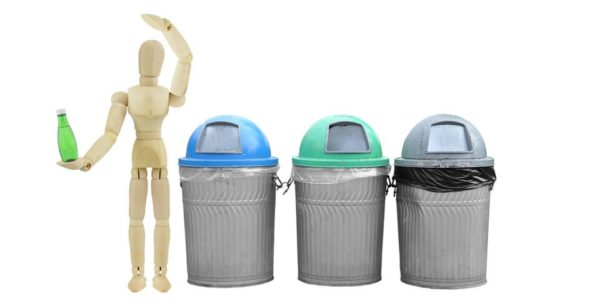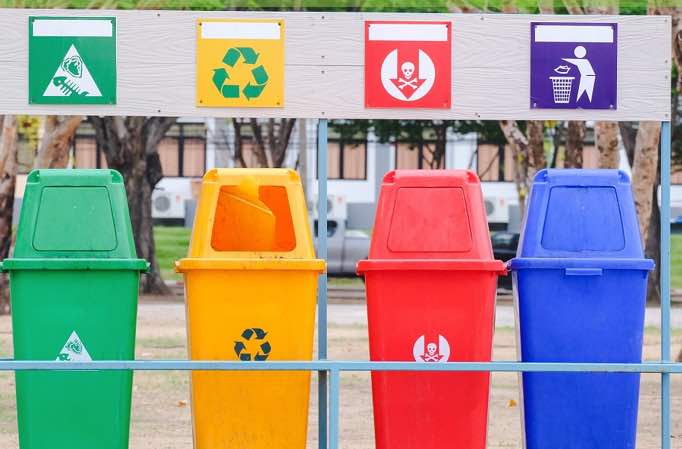We’ve all been there. You’re standing in front of the recycling bin with something in your hand — perhaps a beverage cap, crinkly cellophane wrapping, the tinfoil lid from a sour cream container, or a pizza box. You’re not entirely sure whether you can recycle it, but you think you can.
Probably.
Maybe?

You’d rather err on the side of caution than waste, so you toss the item into the recycling and figure that if it’s not suitable, the recycling facility can sort it out. No harm, no foul — right?
Unfortunately, no. Gather ’round while I explain how wrong we are for doing this.
Recyclers have a word for this kind of well-intentioned, but ultimately harmful, behavior: It’s called “wishcycling.” The apt term seems to have been coined by Bill Keegan, president of a recycling company in Shakopee, Minnesota, and it’s loosely defined as “the practice of tossing questionable items in the recycling bin, hoping they can somehow be recycled.”
It’s incredibly common, but also incredibly damaging to the very recycling programs you’re trying to support with your eco-friendly efforts. The issue with wishcycling is that, although it seems like it’s a great idea, tossing potentially unrecyclable items into your blue bin ends up costing time, money and even sometimes creating far more waste. Here’s how.
1. Wishcycling Wastes Time
Most recycling plants these days rely on complex machinery to sort and process our recyclables. These machines are designed to recognize and appropriately divert a specific set of items — namely, the items accepted by your local recycling program. When things like cling plastic film, shredded paper, or bottle caps get tossed in with proper recycling items, it can jam up the machinery. It’s not uncommon to have workers spend up to a few hours fixing the issue, grinding the whole operation to a halt, and temporarily preventing any other items from being recycled.
2. Wishcycling Wastes Money
We’ve all heard the saying “time is money,” right? Well, the time wasted on fixing clogged machinery and having an entire recycling plant put on pause while the issue is fixed ends up costing taxpayers money — and potentially jeopardizing recycling plant operators’ relationship with the commodities market.
If recyclers bale materials with high rates of contamination, markets will not purchase them, which effectively makes recycling unsustainable,” Lara Rezzarday, spokeswoman for Waste Management in Denver, told the Coloradoan. “In order for recycling programs to be sustainable, it is important that we all maintain material stream integrity and quality.”
Director of Environment, Fleet and Solid Waste for London, Canada, Jay Stanford estimated the annual costs of improper recycling and wishcycling to be around $250,000 (in 2015). That’s a hefty price tag for this crossed-fingers approach to recycling.
3. Wishcycling Can Create More Waste
Recycling operations work by collecting, sorting, and then selling their recycled material. Recycling is typically done in batches, and if a nonrecyclable item works its way in — by confusing the machinery or eluding hand-sorting — it risks contaminating the entire batch. What does that look like? An Earth911 article on what not to put in your recycling bin explains:
When paper products are recycled, they are mixed with water and turned into a slurry. Since we all know water and oil don’t mix, the issue is clear. Grease from pizza boxes causes oil to form at the top of the slurry, and paper fibers cannot separate from oils during the pulping process. Essentially, this contaminant causes the entire batch to be ruined. This is the reason that other food-related items are nonrecyclable (used paper plates, used napkins, used paper towels, etc.).”
Editor’s note: Although a recent study determined that recycling pizza boxes is possible, please follow the guidance provided by your recycling provider regarding what you can put in the bin.
Beat Wishcycling by Learning the Local Recycling Guidelines

So, while you think you’re helping out by tossing anything and everything that could possibly, maybe, sort of be recycled into your blue bin, you may actually be dooming literal tons of other, properly recycled, items to the trash.
What’s a wishcycler to do? First of all, familiarize yourself with your city’s recycling program and its unique guidelines — almost every program is different. Do a quick Google search, use the Earth911 recycling search, or call your local municipal office if you are having trouble finding specific guidelines.
Print the guidelines and keep them taped on your fridge or beside your recycling bin for easy reference. Just because some plastics are accepted doesn’t mean all plastics are accepted; just because you can recycle glass bottles doesn’t mean you can also toss in their metal or plastic bottle caps.
Getting familiar with the requirements of your local recycling program means that you can finally make the most of your good intentions and happily start recycling the rightway.
The post 3 Big Reasons “Wishcycling” Is Always a Bad Idea appeared first on Earth911.








